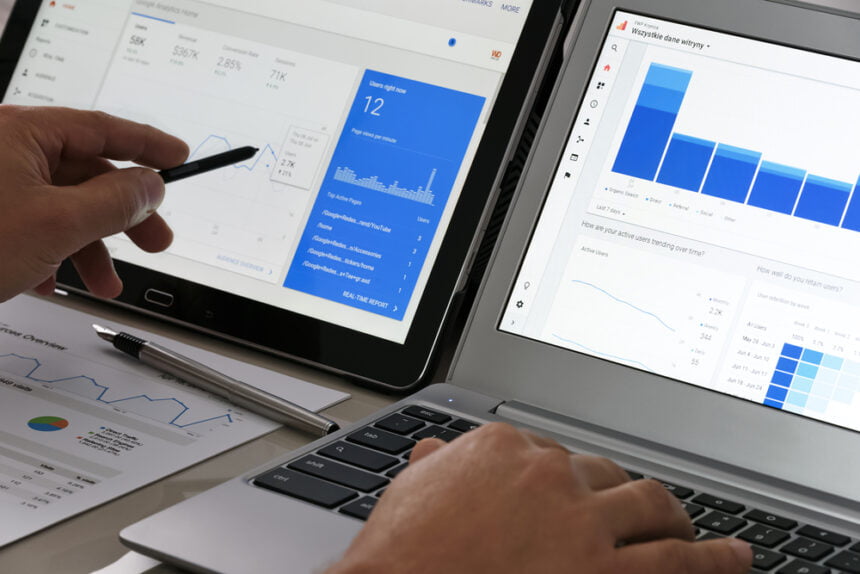Web analytics technology is having a profound impact on the field of digital commerce. Smart companies recognize that analytics helps them optimize their business models and bolster engagement considerably.
One of the best website analytics tools available is Google Analytics. Google Analytics is a powerful tool that comes with tons of features, insights, and customizable tracking options. Regardless of company size and industry, every business owner should leverage the power of Google Analytics to hone their SEO efforts.
There are plenty of SEO insights that you can get from Google Analytics for free that will help you improvise the overall SEO efforts and generate more results. You need to use data strategically to get the best results.
Even if you have just started using this tool, these five Google Analytics insights will help you thrive online in your industry and create a solid SEO strategy.
1. Custom segments
Custom segments feature is among the most useful options that let you monitor traffic with various segmentations. From channels, visitors, goals, or demographics, the options are many. With custom segments, you can easily check how many visitors completed goals and which regions are generating the highest sales.
With custom segments, you can easily understand how your users are interacting with products, services, and pages of your website. Explore the Audience tab of Google Analytics to gather more insights about the users.
In the Audience tab, you can dig down into three main categories to explore more data. The categories are Affinity categories, In-market segments, and the other category segment. By opting a suitable SEO packages or going deep into these sections, you can create a better persona of users and then optimize your SEO strategies accordingly. By collecting useful data sets, you can also improve your ads and generate more traction.
2. Check mobile traffic
Google and other search engines are focusing more on mobile-first indexing and that’s why you need to keep track of mobile traffic. As most people now visit websites using their smartphones, it’s critical for business owners to monitor the website traffic. You need to check the number of mobile conversions on each page. It will help you understand which pages are doing great and which ones need optimization.
You can compare the mobile and desktop traffic and bounce rate to evaluate which version is performing well and which one needs revamp. You can compare issues side by side and make sure all the pages are working fine in both desktop and mobile modes. If you have a multilingual website, then you need to check the mobile traffic in all the languages to ensure all the versions are working well.
3. Website search and navigation
Google Analytics also helps optimize website search and navigation. Having seamless site navigation to help users find what they are searching for quickly is important. Fortunately, Google Analytics helps assess the performance of website navigation and performance considerably. All websites have search bars where the users type their queries. You need to ensure that the search path is short and users get quick results.
If a large portion of your traffic is utilizing the search bar, it’s a hint that you can optimize the search bar to improve the overall user experience. It will help you grow sales and customer retention rates as the users can get results faster and they can take buying action quickly. If your website does not have a search bar, it’s high time to add one and see a surge in the traffic and engagement rate on your platform.
The search terms that users are entering in the search bar can help you generate interesting content ideas that will drive more sales and traction. For example, if a user searches about a term then you can publish a blog on that topic to generate both organic traffic and a higher retention rate.
4. Focus on bounce rate
Bounce rate is a critical factor that every business owner should focus on and try to keep it lower as much as possible. For those who don’t know, the bounce rate in Google Analytics tells how quickly a user landed on a page and then bounced back due to many possible reasons. A higher bounce rate brings serious problems and website owners need to fix it on priority.
You can filter all the pages that have a higher bounce rate and then check for reasons why the audience is bouncing back. Check factors like page loading speed, content quality, and mobile responsiveness to find the exact problem.
5. Find underperforming pages
By sorting the landing pages with descending traffic, you will get a couple of pages that require revamp and optimization. With this simple tip, you can boost your traffic by fixing the pages and reduce the bounce rate significantly.
There may be several reasons why these pages are not performing well and you need to fix them all to give SEO a rapid boost. Many of the underperforming pages might not be in use, it’s always a better idea to remove those unused pages and optimize the website’s overall structure.
These were the most powerful SEO insights that you can gather from Google Analytics and improve the overall SEO practices. Start using these tips one by one and keep your website ahead of the competition in your domain.








